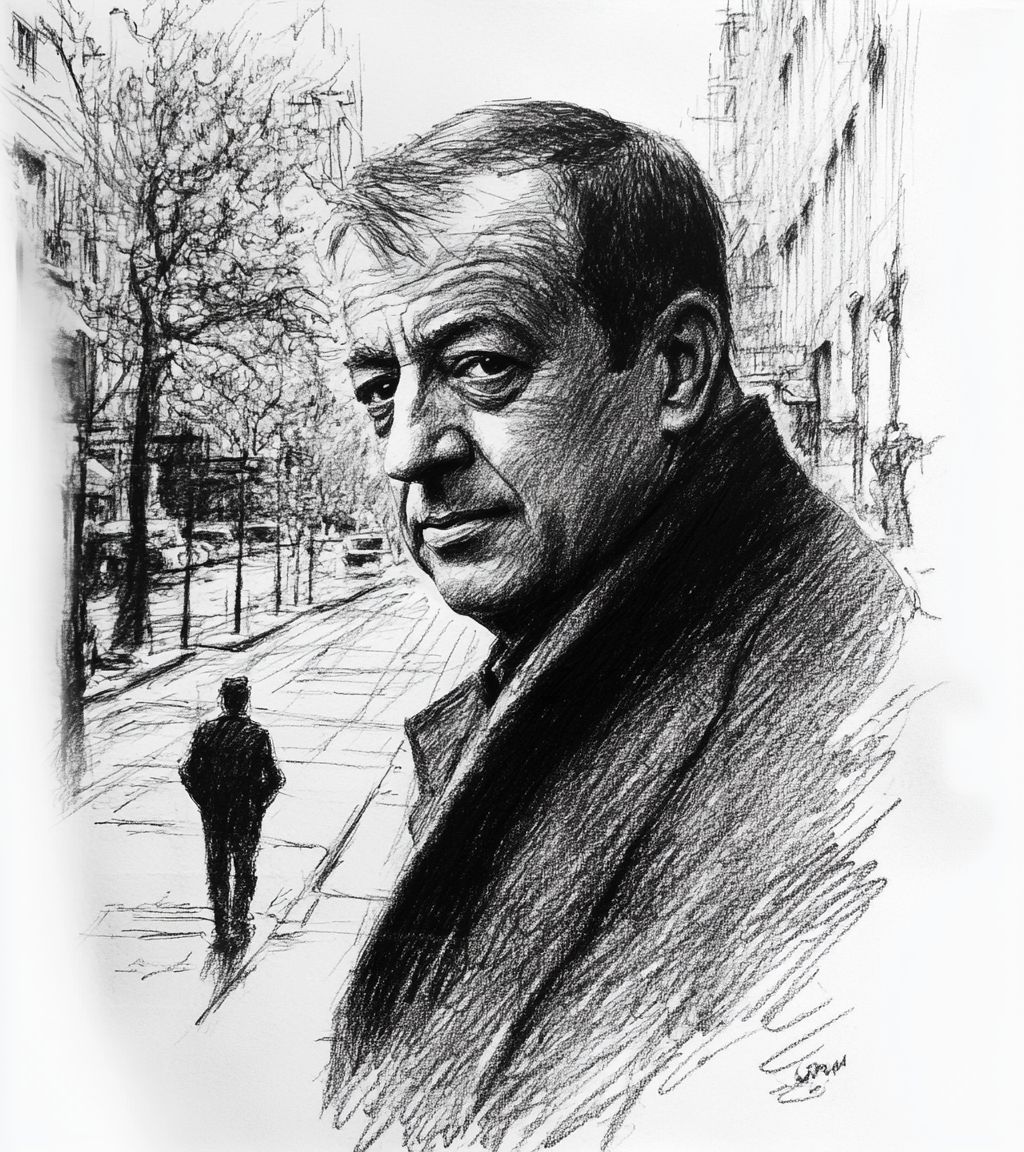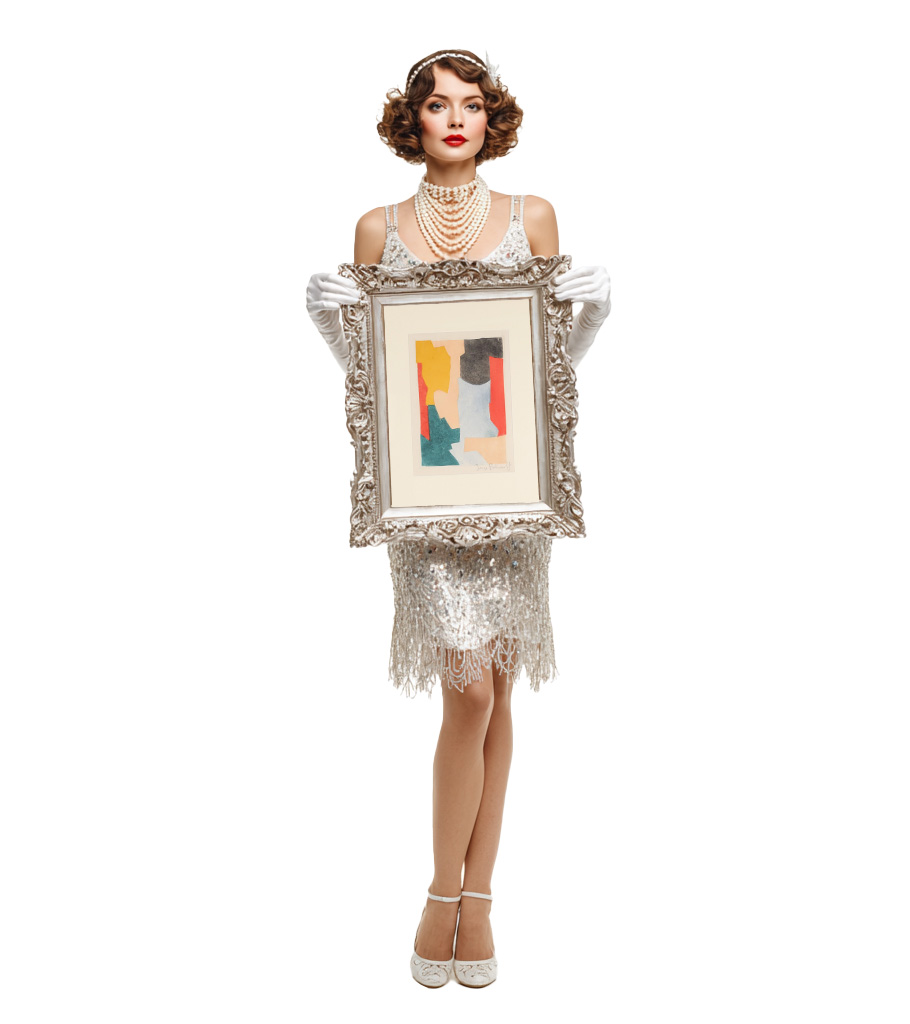
Serge Poliakoff
Initially trained as a musician, Serge Poliakoff supported himself as a guitarist while pursuing painting. In the 1930s, he studied at the Académie de la Grande Chaumière and the Slade School of Fine Art in London. Returning to Paris, Poliakoff became associated with the postwar abstract art movement and was part of the influential School of Paris.
Poliakoff is best known for his vibrant abstract compositions built from interlocking shapes and rich color fields. His mature style emerged in the 1950s and was characterized by harmonious color juxtapositions, textured surfaces, and a focus on spatial tension rather than geometric precision. He often worked with thick layers of pigment to create a sense of depth and resonance. Though often linked to lyrical abstraction, Poliakoff’s work maintains a strong sense of order and contemplation.
Notable works by Poliakoff include Composition rouge, bleue et noire (1955), Composition abstraite (1962), and Bleu, rouge, gris (1967). His paintings were widely exhibited during his lifetime and afterward, including solo shows at the Galerie Denise René and Galerie de France in Paris. He represented France at the 1962 Venice Biennale and was the subject of major retrospectives at the Musée d'Art Moderne de la Ville de Paris and the Musée des Beaux-Arts de Nantes. His works are held in collections such as the Centre Pompidou, Tate Modern, and the Guggenheim Museum.
Collected by major institutions and notable private collectors:
— Tate— Art Institute of Chicago
— Centre Pompidou
— Stedelijk Museum
Notable sales and auction records:
— Composition abstraite, CHF 1,2 million at Galerie Kornfeld, 2021— Composition abstraite, EUR 881,2 thousand at Artcurial, 2011
— Rouge bleu jaune, CNY 7,5 million at Christie's, Shanghai, 2018
Artworks and Paintings
Biography and Artistic Career Highlights
Serge Poliakoff was born on January 8, 1900, in Moscow, into a prosperous family of a horse trader. His childhood was spent in a well-off and cultured environment, where he showed early interest in drawing and music. However, the fate of his generation was defined by historical upheavals: the Revolution and the Civil War disrupted the familiar way of life.
1917–1919 — studied at the Moscow School of Painting, Sculpture, and Architecture. At the same time, Poliakoff developed a passion for music, especially the guitar, which would accompany him throughout his life.
1919 — emigrated from Russia, first to Constantinople, then to Egypt. This experience instilled in him a sense of displacement and a desire to find his own path.
1923 — settled in Paris, where he pursued music professionally, playing guitar in cafés and concert halls to earn a living.
1929 — entered the Académie de la Grande Chaumière in Paris, where he deepened his study of painting. His first works were created in a realistic manner.
1935 — traveled to London and studied at the Slade School of Fine Art. There he became acquainted with European modernism and began moving toward abstraction.
1937 — returned to Paris and actively engaged in the city’s artistic life.
1940s — period of forming his individual style: influenced by Cubism, Fauvism, and Orphism, he began creating abstract compositions made up of large color fields. His paintings were built on the tense interaction of forms and rhythms.
1945 — his works began to be exhibited in Parisian galleries.
1950s — Poliakoff became one of the leading representatives of French abstraction. He joined the group “Abstraction-Création,” where, together with other artists, he developed the ideas of lyrical and geometric abstraction.
1952 — his solo exhibition in Paris brought him wide recognition.
1955–1960 — gained international acclaim: participated in exhibitions in Europe and the United States, collaborated with galleries in Zurich, London, and New York. His paintings began to be collected by major museums worldwide.
1962 — the French government acquired his works for the national collections.
1965 — Poliakoff was granted French citizenship, symbolically affirming his new homeland.
1960s–1970s — continued to work on series of abstract paintings, refining his language to the utmost simplicity and power. His compositions became a kind of “music of color,” echoing his lifelong love of the guitar.
On October 12, 1969, Serge Poliakoff died in Paris. His work became an important part of European modernism: from a refugee and musician, he transformed into one of the major masters of mid-20th-century abstract painting, whose works are still regarded as a harmony of color, form, and spiritual quest.

